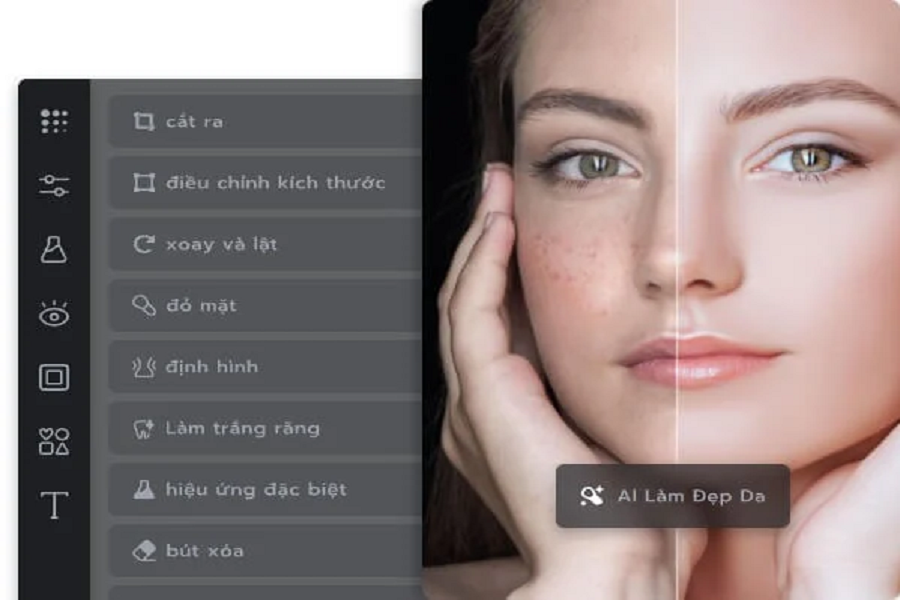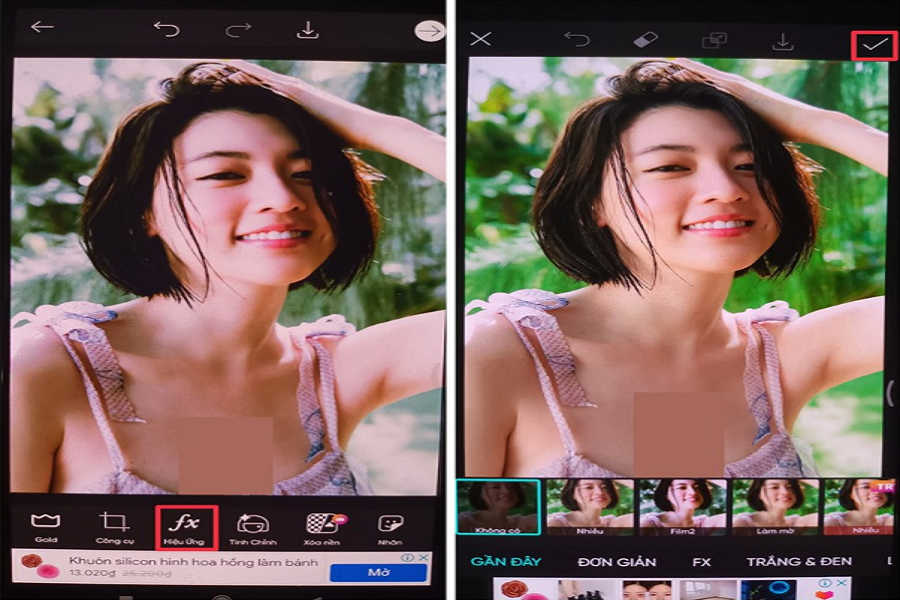In the digital age, photo editing effects have become an essential tool for photographers, graphic designers, and content creators alike. These effects not only enhance the visual appeal of images but also serve to communicate a particular mood or narrative. With the right application of various editing techniques, even an ordinary photograph can be transformed into a compelling visual story that resonates with the viewer.
Introduction to Photo Editing Effects
Photo editing is a multifaceted process that involves altering images to achieve desired aesthetics, correct flaws, or convey specific emotions. The rationale behind using photo editing effects stems from the desire to elevate the quality of photographs. These effects can range from simple adjustments, such as brightness and contrast, to more complex manipulations like add layers or creative filters. Each type of effect plays a unique role in shaping the final outcome of an image, making it vital for creators to understand their applications and implications.
Moreover, photo editing effects allow for personal expression and creativity. They empower individuals to explore artistic vision, enabling them to highlight focal points, create depth, or evoke specific feelings through color grading or texturing. Whether it’s applying a vintage filter to evoke nostalgia or using sharpening techniques to draw attention to intricate details, the effects utilized can significantly alter the perception and impact of a photograph.
As technology continues to evolve, new advancements in photo editing software are continually emerging, providing users with an expanding arsenal of effects. From basic applications available on mobile devices to professional-grade tools meant for advanced users, the accessibility of photo editing options has increased tremendously. Understanding the various types of photo editing effects is crucial for anyone aiming to elevate their visual storytelling and make an impression through their imagery.
Color Adjustments in Photo Editing
Color adjustments are a fundamental aspect of photo editing that significantly influence the overall mood and tone of an image. Various techniques, including color correction, saturation adjustments, and white balance, are employed to enhance images, ensuring they convey the intended emotion and visual appeal. Understanding these methods is vital for photographers and editors aiming to create impactful visuals.
One of the primary techniques is color correction, which involves correcting disparities in color to achieve a more natural representation of the subject. For instance, an image taken in poor lighting conditions may exhibit color casts that detract from its quality. By using editing software, photographers can adjust the color balance to bring out the true colors of the scene, which can transform a dull photograph into a vibrant one.

Saturation adjustments allow editors to manipulate the intensity of colors within an image. Increasing saturation can enhance certain hues, making a photo more vivid and eye-catching. This technique is particularly useful in landscape photography, where the goal is often to portray nature’s beauty in a more striking manner. Conversely, reducing saturation may be appropriate for creating a more subdued effect, such as in portrait photography, where the emphasis should be on the subject rather than the surroundings.
Furthermore, white balance is crucial in achieving accurate color reproduction. Different light sources can introduce color casts, with daylight appearing bluish and incandescent lighting casting a warm tone. By adjusting the white balance, editors can neutralize these casts, allowing for a more authentic depiction of the scene. Whether capturing a sunlit beach or a dimly lit indoor setting, proper white balance ensures that colors appear true to life.
In conclusion, color adjustments encompass various techniques that play a vital role in photo editing. By mastering color correction, saturation adjustments, and white balance, photographers can significantly enhance their images, shaping the viewer’s perception and emotional response. Each technique offers distinct benefits and applications, making them essential tools in the photo editing process.
Related Articles: Online photo editing tool
Filters and Presets
In the realm of photo editing, filters and presets play an essential role in transforming images and enhancing their visual appeal. Filters are pre-established settings that alter the overall appearance of a photo, influencing aspects such as color balance, contrast, and saturation. Various types of filters are available to cater to different creative needs, including vintage, black and white, high dynamic range (HDR), and many others. Each filter can dramatically change the mood and feel of the image, making it crucial for photographers and editors to choose wisely based on the intended outcome.
For instance, vintage filters evoke a sense of nostalgia through muted tones and grainy textures, reminiscent of photographs taken in earlier decades. On the other hand, black and white filters strip away color to highlight composition, shadows, and emotional depth. HDR filters, meanwhile, help to capture greater detail in both highlight and shadow areas, making the final image more vivid and dynamic. The diversity of filters ensures that photographers can explore various artistic expressions and effectively convey their message.
Presets, which are collections of filters and adjustments saved for future use, further streamline the photo editing process. They allow editors to achieve a particular style quickly and consistently across multiple images. This is particularly beneficial for maintaining a cohesive look in professional projects, such as portfolios or social media feeds. By applying the same preset to a series of photos, photographers can ensure that their work appears unified, enhancing their overall aesthetic. The efficiency offered by presets reduces the time spent on manual adjustments, allowing editors to focus on the creative aspects of their work.
Text and Graphic Overlays
Incorporating text and graphic overlays into photographs serves as a powerful mode of visual communication, transcending the mere representation of subjects by adding layers of meaning. By strategically integrating text, photographers can deliver pertinent information, reinforce branding, or create compelling narratives that resonate with viewers. When adding text to images, it is essential to consider various factors to ensure its effectiveness and clarity.
First and foremost, the choice of font and style is paramount. A font should align with the overall tone of the image and the message being conveyed. For instance, a modern, sans-serif font may complement a vibrant lifestyle photograph, while a classic serif font might better suit a formal portrait. Additionally, contrast is crucial; text must stand out against the background without overwhelming the visual elements of the photo. Utilizing text shadows or outlines can enhance readability, especially in images captured in varied lighting conditions.
Graphic overlays add another dimension to photo editing by allowing creatives to introduce elements that can enrich storytelling. Such graphics could range from simple shapes and patterns to intricately designed illustrations that complement the theme. For example, using a soft vignette or a light texture can draw attention to a subject, while icons or symbols can convey specific messages without relying on words. However, it is vital to avoid overcrowding the image with excessive graphics, as this can detract from the core subject matter.
Ultimately, the integration of text and graphic overlays should enhance the viewer’s experience and understanding. When done thoughtfully, these elements can transform a simple photograph into a narrative-rich image that captivates and informs. Thus, photo editing through overlays paves the way for innovative storytelling techniques, making it a valuable tool in the realm of photography.
Blur and Focus Effects
Blur and focus effects represent an essential aspect of photo editing, used skillfully to guide the viewer’s attention and enhance visual storytelling. By manipulating depth of field, motion blur, and selective focus, photographers are able to create compelling images that capture the viewer’s eye and evoke emotional responses.
Depth of field is a critical technique in photography that involves controlling the area of an image that appears sharp. A shallow depth of field produces a blurred background, isolating the subject and emphasizing it more prominently within the frame. This effect is particularly effective in portrait photography, where the subject’s features can be accentuated against a soft backdrop. Conversely, a greater depth of field keeps more elements in focus, ideal for landscapes or architectural shots, providing a sense of the broader scene.
Motion blur is another artistic tool that imparts a sense of dynamism to an image. By intentionally blurring moving subjects while keeping other areas sharp, this technique conveys action and energy. Photographers often employ motion blur in sports photography or while capturing bustling city life, giving the viewer an impression of speed and fluidity. The selectivity of focus allows for creative expression; it invites the viewer to explore the nuances within the frame while directing their attention to a particular element.
Selective focus, similar to depth of field, enhances specific components of a photograph by leaving surrounding areas out of focus. This approach can create an intimate connection between the viewer and the highlighted subject, allowing for broader interpretations. Blending these blur and focus effects, photo editors can craft unique visual narratives that resonate, making the final image not only pleasing but also impactful.

